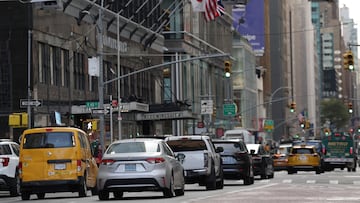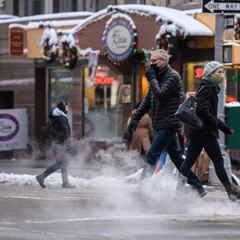These are the vehicles that will have to pay $9 if they want to pass through Manhattan: deadline is January 5, 2025
New York Governor Kathy Hochul has announced a plan to implement congestion pricing in New York City that will save commuters up to $1,500 per year.

New York Governor Kathy Hochul slammed the brakes on implementing a New York City congestion pricing plan back in June, just weeks before it was supposed to go into effect for the Big Apple. Of the $15 fee to enter the Congestion Relief Zone, basically all of Manhattan below 60th Street, she said it would add financial burdens to working- and middle-class families.
On Thursday, she rolled out a new plan that the governor says will save commuters $1,500 a year while still achieving the goals of the congestion pricing initiative. That includes “new tools to reduce congestion and air pollution in communities citywide,” and $15 billion in funding for the Metropolitan Transportation Authority (MTA).
These are the vehicles that will have to pay $9 if they want to pass through Manhattan: deadline is January 5, 2025
The new plan laid out by the Governor will reduce all tolls for vehicles entering the City’s Central Business District (CBD) by 40%. “As I said from the start, a $15 toll was just too high in this economic climate. That’s why our plan cuts the daytime toll to $9 for cars,” said Governor Hochul. The adjusted congestion pricing plan will begin to be implemented, in principal, at midnight on January 5, 2025. First it must be taken up by the MTA Board at its next meeting on November 18.
These will be the new rates under the adjusted congestion pricing plan:
- Daytime E-ZPass tolls
- Passenger vehicles (once per day): $9
- Motorcycles (once per day): $4.50
- Small trucks and non-commuter buses: $14.40
- Large trucks and sightseeing buses: $21.60
- Tunnel crossing credits reduced by 40 percent of original plan
- Nighttime discounts of 75 percent of daytime tolls
- Per-ride fees for all trips to, from, or within the CBD
- Taxis and black cars: $0.75
- App-based for-hire vehicles: $1.50
“Additionally, some eligible drivers will receive additional discounts, credits and exemptions, such as a low-income volume discount or a qualified disability exemption,” states the governor’s office in a press release. The plan also includes a limit on how much tolls can be raised through 2030 to “help drivers adapt more easily to the program and give the MTA and other stakeholders the ability to monitor data regarding implementation and effects.”
Related stories
Even though the governor’s plan lowers the original amounts that had been proposed, it will still allow the MTA to get the $15 billion needed for its 2025-2029 Capital Program to make improvements to mass transit in New York City. These include extending the Second Avenue subway to East Harlem, signal upgrades on several lines and accessibility improvements like elevators to over 20 stations. Additionally, the city will add hundreds of new electric buses to the current fleet.
Get your game on! Whether you’re into NFL touchdowns, NBA buzzer-beaters, world-class soccer goals, or MLB home runs, our app has it all. Dive into live coverage, expert insights, breaking news, exclusive videos, and more – plus, stay updated on the latest in current affairs and entertainment. Download now for all-access coverage, right at your fingertips – anytime, anywhere.


